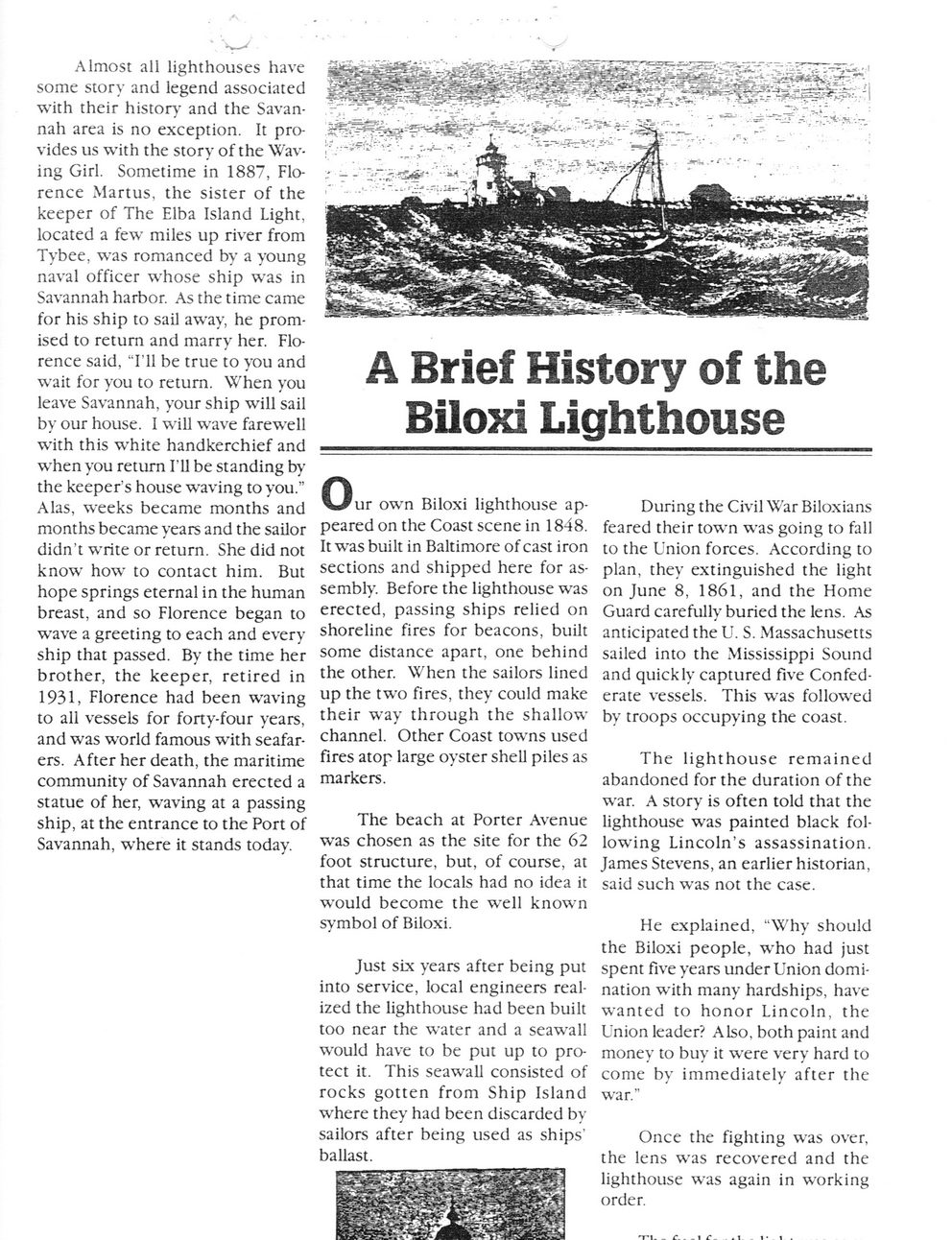This text was obtained via automated optical character recognition.
It has not been edited and may therefore contain several errors.
Almost all lighthouses have some story and legend associated with their history and the Savannah area is no exception. It provides us with the story of the Waving Girl. Sometime in 1887, Florence Martus, the sister of the keeper of The Elba Island Light, located a few miles up river from Tybee, was romanced by a young naval officer whose ship was in Savannah harbor. As the time came for his ship to sail away, he promised to return and marry her. Florence said, “I’ll be true to you and wait for you to return. When you leave Savannah, your ship will sail by our house. I will wave farewell with this white handkerchief and when you return I’ll be standing by the keeper’s house wraving to you.” Alas, weeks became months and months became years and the sailor didn’t write or return. She did not know how to contact him. But hope springs eternal in the human breast, and so Florence began to wave a greeting to each and every ship that passed. By the time her brother, the keeper, retired in 1931, Florence had been waving to all vessels for forty-four years, and was world famous with seafarers. After her death, the maritime community of Savannah erected a statue of her, waving at a passing ship, at the entrance to the Port of Savannah, where it stands today. A Brief History of the Biloxi Lighthouse O ur own Biloxi lighthouse appeared on the Coast scene in 1848. It was built in Baltimore of cast iron sections and shipped here for assembly. Before the lighthouse was erected, passing ships relied on shoreline fires for beacons, built some distance apart, one behind the other. When the sailors lined up the two fires, they could make their way through the shallow channel. Other Coast towns used fires atop large oyster shell piles as markers. The beach at Porter Avenue was chosen as the site for the 62 foot structure, but, of course, at that time the locals had no idea it would become the well known symbol of Biloxi. Just six years after being put into service, local engineers realized the lighthouse had been built too near the water and a seawall would have to be put up to protect it. This seawall consisted of rocks gotten from Ship Island where they had been discarded by sailors after being used as ships' ballast. During the Civil Wrar Biloxians feared their town was going to fall to the Union forces. According to plan, they extinguished the light on June 8, 1861, and the Home Guard carefully buried the lens. As anticipated the U. S. Massachusetts sailed into the Mississippi Sound and quickly captured five Confederate vessels. This was followed by troops occupying the coast. The lighthouse remained abandoned for the duration of the war. A story is often told that the lighthouse was painted black following Lincoln’s assassination. James Stevens, an earlier historian, said such was not the case. He explained, “Why should the Biloxi people, who had just spent five years under Union domination with many hardships, have wanted to honor Lincoln, the Union leader? Also, both paint and money to buy it were very hard to come by immediately after the war.” Once the fighting was over, the lens was recovered and the lighthouse was again in working order.

Lighthouses Brief-History-of-the-Biloxi-Lighthouse-(1)